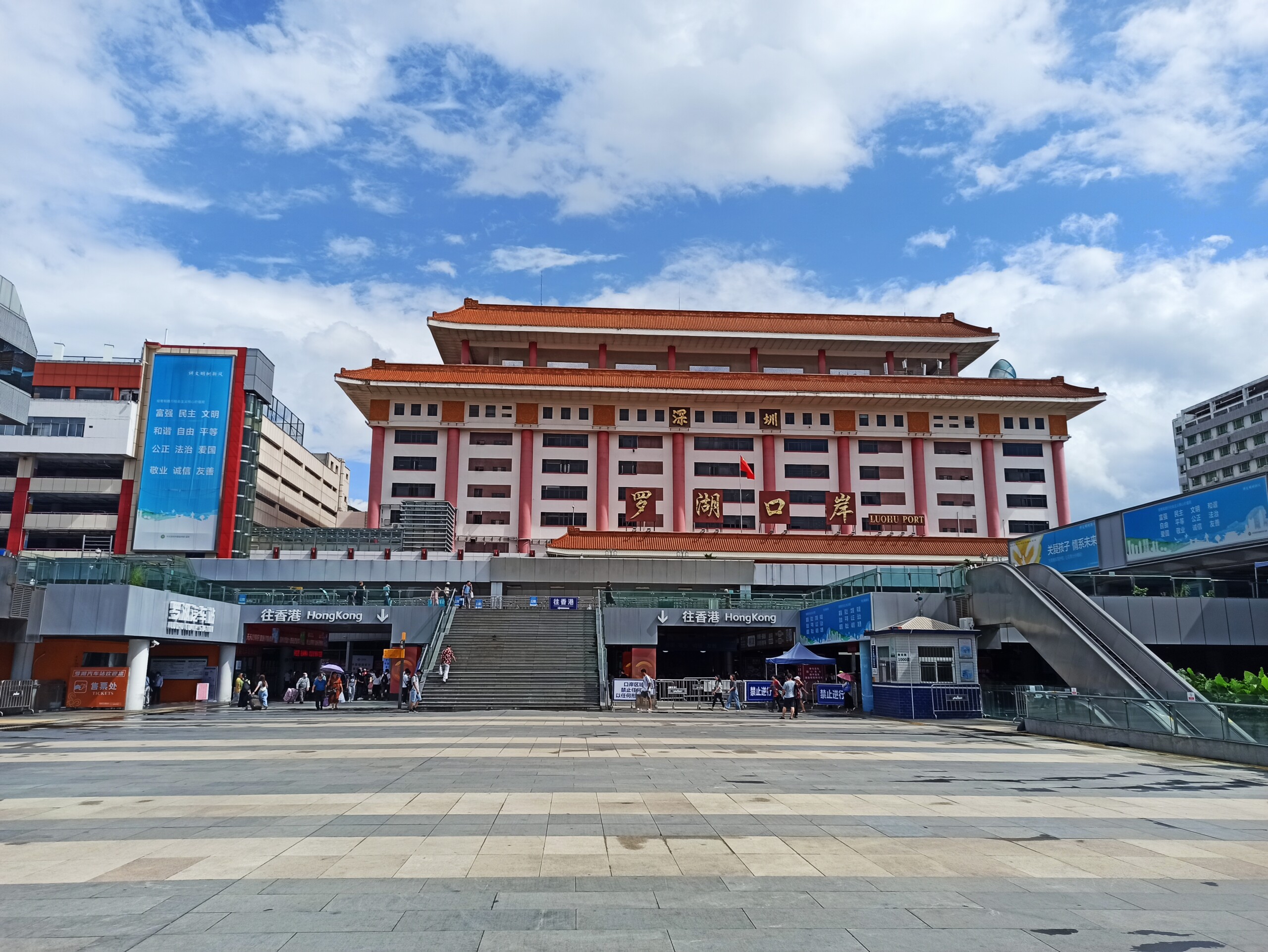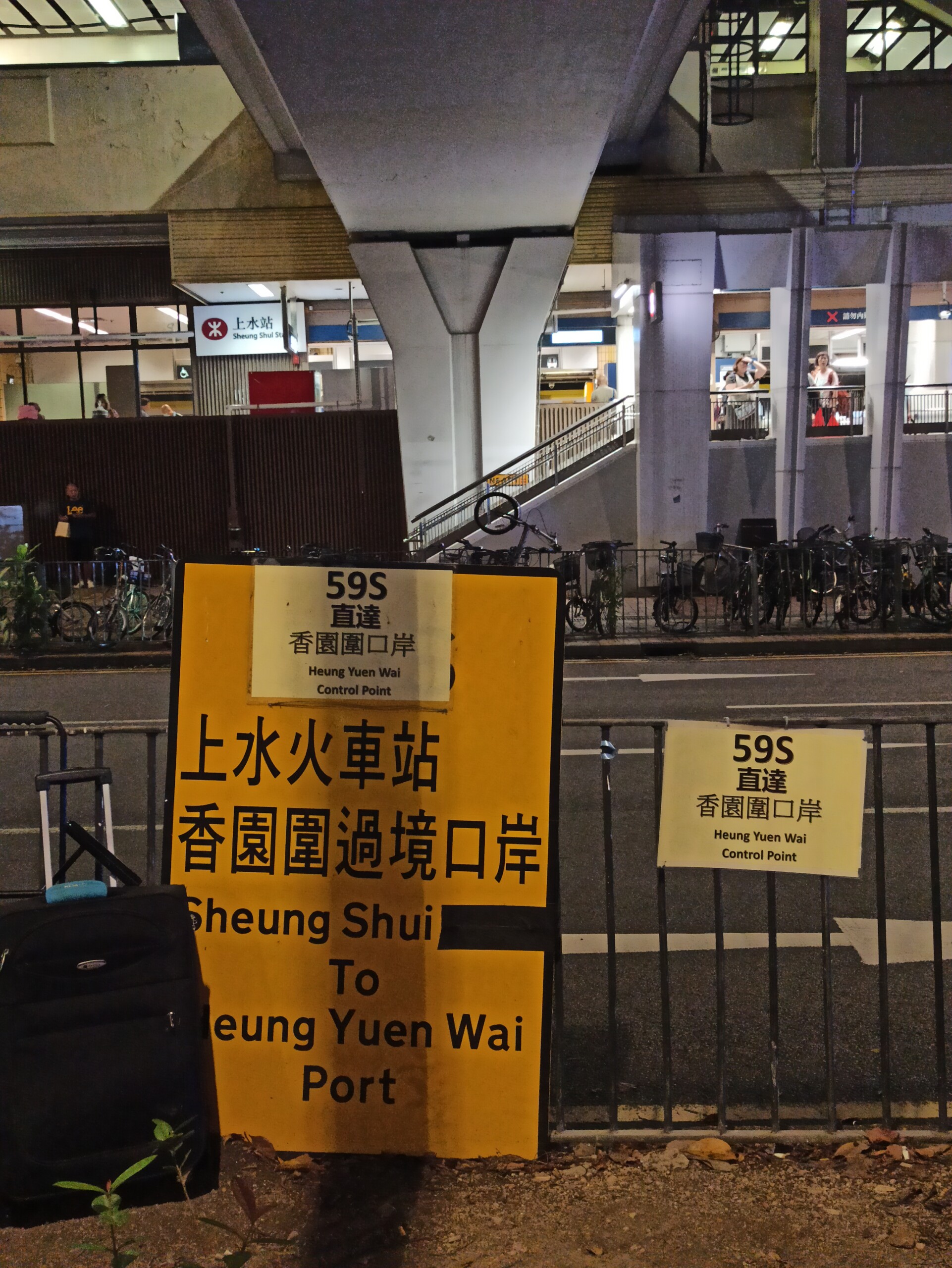Last week, after flying in to Hong Kong, I wanted to use the new(est) China Hong Kong border crossing to reach Shenzhen.
For background, the Chinese side is called Liántáng (莲塘), and the Hong Kong side Heung Yuen Wai (香園圍). It is located in the Luo Hu district of Shenzhen, in a more residential part of town (the Chinese map doesn’t reflect any border). This border crossing, which opened in 2020, was available only to cargo traffic during COVID-19. However, earlier this year, on 8 February, it became the second possible crossing for pedestrians; part of the goal was to alleviate pressure on the heavily trafficked Luo Hu/Lo Wu checkpoint.

That there’s a new China Hong Kong border crossing isn’t so surprising; what is key in this particular set-up is that pedestrians finally have another choice. The Liantang checkpoint is open daily from 07:00 – 22:00. (link in Chinese)
You see, besides Luo Hu/Lo Wu, at every other immigration checkpoint, you would either have to take a car or bus (which might leave you behind if you’re the only non-local), a boat, or ehem, a plane.
But how does one even reach the Liantang/Heung Yuen Wai new border crossing?
Here’s the current reality: Hong Kong doesn’t make it easy.
No matter where you’re coming from — whether it’s on the A43 bus from the airport, or on the MTR — your first stop should be Sheung Shui station. It’s the transit hub of the northernmost part of Hong Kong, and offers options to a few different Shenzhen checkpoints.
When I first read about Heung Yuen Wai, I was regaled with stories about the B7 bus, going between Sheung Shui and that border. Well, my flight landed late, and I only made it to Sheung Shui around 20:00, so there wasn’t much time to waste. As per the B7 schedule, I walked to Po Wan Road, but couldn’t find a bus stop for it. (Po Wan Road was clearly NOT in the main transit hub area).
Given the time (remember, the Heung Yuen Wai border closed at 22:00, so the last bus there would be leaving around 21:00), I hopped on another public bus to try to cross at Man Kam To/Wenjindu. Well, if you had read this far, you’d know that the Man Kam To crossing wasn’t open to pedestrians. Thus, I had to hop on that same bus back to Sheung Shui.
By the time I was back in Sheung Shui, it was around 20:47. What to do? Take the easy way out, and hop on the train to Lo Wu? Or, keep taking the Heung Yuen Wai bait?
Bait.
The biggest issue I have with this new border crossing is that the names on either side of the border are completely different. As Luo Hu/Lo Wu and Man Kam To/Wenjindu are similar enough, the entire time, I was looking for the Cantonese version of Liantang. Wrong. For whatever reason, it’s Heung Yuen Wai.
After that epiphany on the bus back to Sheung Shui, I found out that there was also a minibus going to the border, the 59S:

If you’re familiar with the Hong Kong MTR, you can clearly see its logo in the background of the photo. Take Exit D of Sheung Shui station, and then cross into the minibus parking lot.
I just made the last or penultimate minibus to border, at a shade before 21:00.
Less than 20 minutes later, I was faced with more confusing Hong Kong signage. That’s when I got annoyed, because I didn’t want to have to return to Sheung Shui, lest this border close.
A random elevator ride later, and I was finally at the immigration area. The HK side was empty, and the Chinese side surprised to see a non-local passing through. Yet, just 15 minutes later, I was already at the bus stop to go downtown. (there is also a metro station, called Liántáng Kǒu’àn 莲塘口岸, right outside of the immigration building)
I hope that this review of the new border crossing can help people who are going between China and Hong Kong but who also don’t want to deal with the craziness in Luo Hu. I can’t say that this facility is convenient on the Hong Kong side, since a bus or taxi is required. But once you’re in Sheung Shui, you can get all over Hong Kong … or do what I used to do, and try to collect a stamp from every checkpoint!

Leave a Reply